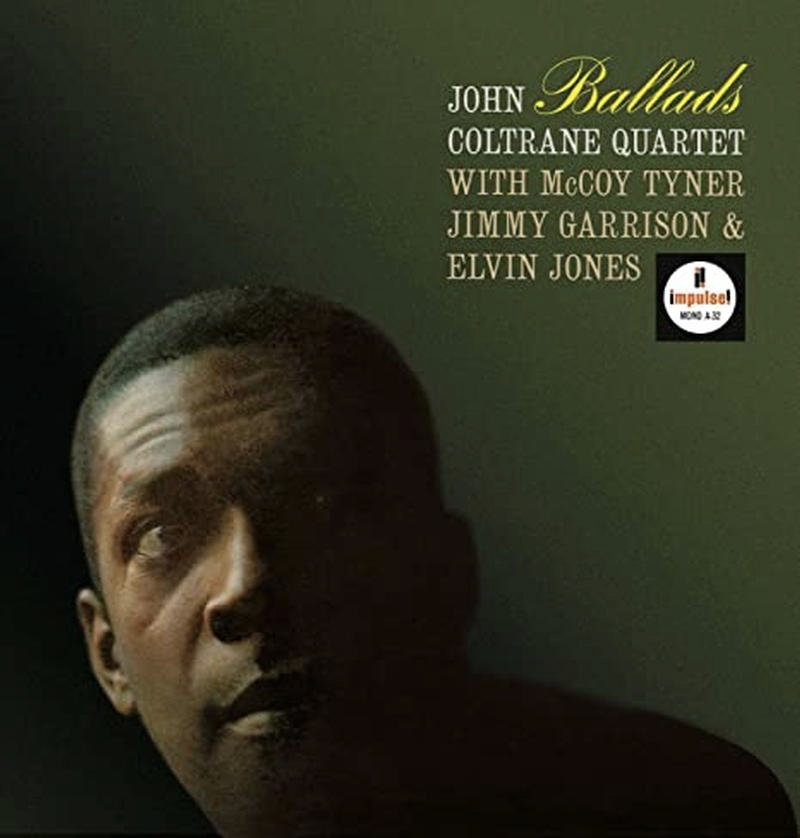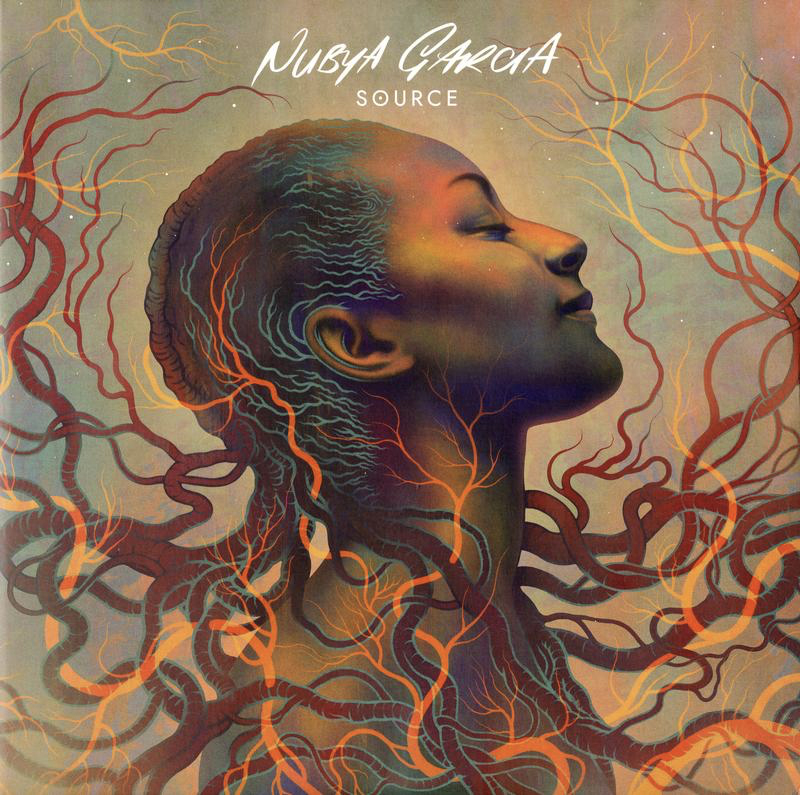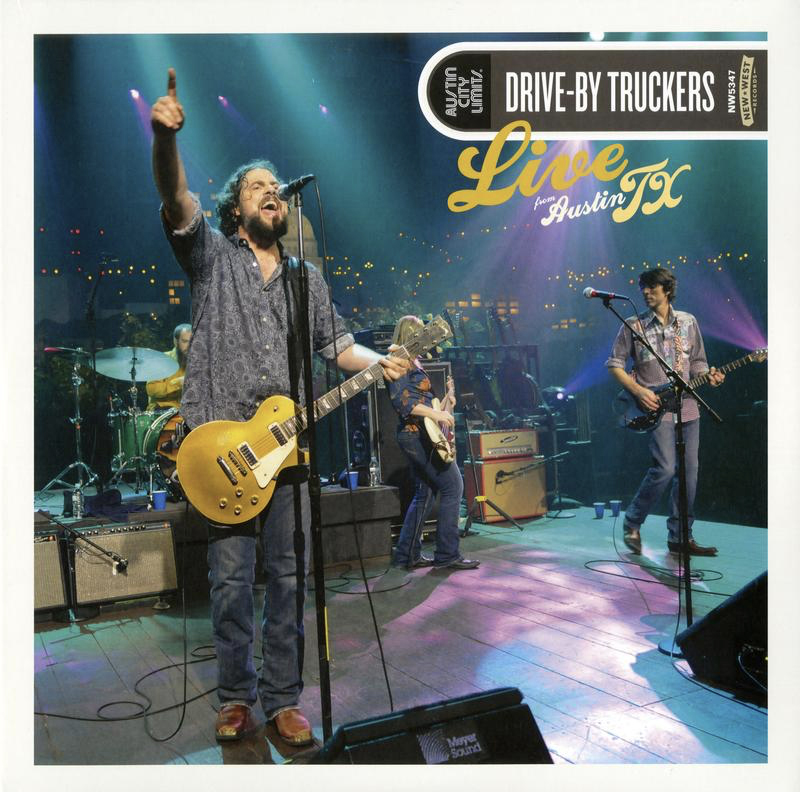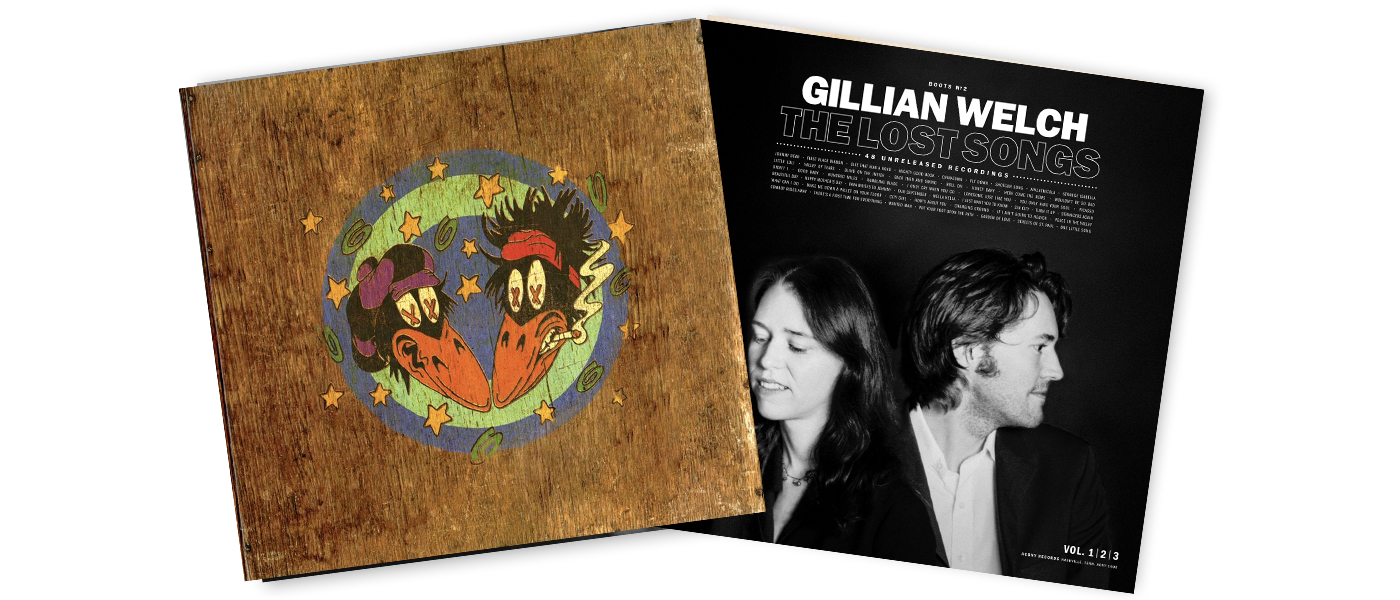
Craft Recordings announced a new “Small Batch” all-analog vinyl reissue series recently. Seems similar to MoFi’s UltraDisk releases in that both are updates of the “one-step” pressing process that, according to my research, began in the 80s. (Apparently, it didn’t take off. Perhaps this was due to overpricing, or maybe because C.D.s were about to crawl up out of the gutters, unforeseen, and ruin the entire industry. Americans have had a little over four years to familiarize themselves with this type of thing.) According to Craft’s marketing, “Each album selected for the series will undergo all-analog mastering, and then be pressed on 180-gram vinyl in a one-step lacquer process at R.T.I.—as opposed to the standard three-step process—allowing for the highest level of musical detail, clarity, and dynamics while reducing the amount of surface noise on the record.” The technique also allows manufacturers to sidestep two stages of generational loss. Craft started the party with a reissue of John Coltrane’s Lush Life, released in 1961 but recorded a couple of years prior. They made only 1,000 of them, and the author snagged number 0873. I got an email about this release from Craft, immediately went to the site, and ordered my copy. It was sold out entirely within the next 20 minutes. Gotta stay alert in the era of Manufactured Scarcity.
And I’m certainly glad that I did, even if Lush Life has its detractors in the Jazz community. Yeah, it seems a little patched together. The five songs are compiled from three different sessions, and Prestige released them after Coltrane had achieved greater renown elsewhere. (Coltrane himself did not receive this news with enthusiasm. His style had evolved significantly by the time the general public gained access to these recordings.) But it’s still a fine example of what Coltrane sounded like in 1957/1958. And he sounded like what he is today: one of the greatest to ever do it. Listening to Lush Life, I’m struck by his ability to convey such specific emotions with just his horn. When he’s languid, he’s not melancholy. His playing seems indulgent at times but never gratuitous. Luxurious, but not ostentatious. He can, however, just as easily transmit melancholy. He can be flamboyant. But only in service of the song. Lush Life gives him ample room to spread out and explore. If the effect of hearing John Coltrane do that is diminished for you by the shady practices of his former label… well, I guess that sucks. For you. I’m all the way in. Throughout the program, Coltrane’s playing often begins as a mostly steady snowfall, but the flurries will inevitably build. One will often find that the accumulation supports from the ground up rather than burying from the top down. To my ears, his playing is ultimately as optimistic as the album’s title implies.
Alright, we all know that Coltrane was a master, but how does the Small Batch series compete in the audiophile market with similar products? The answer to that is… I don’t know. I don’t have a MoFi UltraDisk title for comparison. The Small Batch series is (slightly) more moderately priced, so Craft wins there. According to the forums, folks prefer MoFi’s packaging (although I do like Craft’s acrylic album artwork inset on the outer box). It seems like Craft is using the same vinyl formulation that Music Matters used for their S.R.X. series, and the Lush Life pressing is dead silent. The sounds are less immediate than the ones that Music Matters produced, though. Bernie Grundman made things plenty clear and transparent while remastering Lush Life, but the songs are still less “alive” than ones found in the S.R.X. series. And M.M.J.’s series retailed at around $60 while Craft’s was around $100.
It’ll be fun to keep an eye on this series and see which titles Craft pulls from their extensive catalog. Staple Singers, anyone? R.E.M.? It might get loud, y’all. Can’t wait to find out.

Alrighty. Next, we’ll explore yet another Coltrane installment from yet another series marketed towards yet more audiophiles: the Acoustic Sounds Series. Recorded three to four years after the Lush Life dates and also over the course of three separate sessions, Ballads was released in early ’63. The Ballads dates, however, were undertaken with a clearer vision of how the final product would sound as opposed to cobbling a few older recordings together and slapping a title down on top of them. Also, Coltrane’s quartet from this era was present for all dates instead of the various configurations of players (trio, quartet, and quintet) utilized on Lush Life. For those of us with compromised attention spans, I’ll cut to the chase and say that Ballads is a blast. You should get a copy. Soon.
Because Trane’s “Classic Quartet” involved McCoy Tyner on piano, Jimmy Garrison on bass, and the great Elvin Jones on drums. (They would go on to record A Love Supreme two years after these sessions. That title is also a part of the series and is equally as great but requires less promotion. I mean, who doesn’t adore A Love Supreme?) The first thing I noticed when I dropped the needle on Ballads was that I didn’t hear… the needle drop. Sounds just started emerging out of my speakers when the band began to play. For this stereo mix, Coltrane is hard in the right channel with Jones all the way on the left. Piano and bass are dead center. As is almost always the case, I’d have preferred the mono mix. Short of that, how about we put Tyner opposite Coltrane and reunite the rhythm section in the middle? Like rational human beings.
Secrets Sponsor
That’s my lone quibble. Early stereo mixes often lack rationale. Beyond that, this thing’s a sonic monster. Coltrane’s playing, as the title implies, is more conservative than what you’ll hear on Supreme, certainly, and even in comparison to what’s on Lush Life. He’s simply playing fewer notes. When I’m spinning Ballads, I feel like I should be at a Jazz lounge sitting in the dark with a romantic partner’s (or stranger’s) head on my shoulder, sipping aviation. No conversation. And, to prove this is part of my own fantasy, no Jazz club smoke either. Because my date and I are the only ones here. And the only ones who hear. Nothing to get between the ears and the performance. That’s the effect. But how did we get here? What went on behind the Jazz Club curtain? From the marketing: “All titles [from the Acoustic Sounds series] are mastered from the original analog tapes…” This is clearly different from “cut from the original master tapes,” and it leads me to believe that the records were likely sourced from high-resolution files that were made using the original tapes. We’ve come a long way in this domain, and I am no longer afraid of the digital dark. Wildflowers and All the Rest cured me of that once and for all. That doesn’t mean I wouldn’t absolutely prefer an A.A.A. version though. And, if I’m right, I also don’t appreciate the marketing sleight of hand. (I guess that counts as another quibble.) Anyway, this was perfectly pressed at QRP and seems wildly popular. To wit: it’s back-ordered. But there will be a repress (instead of the limited-run described in the Lush Life review). It seems more and more common for retailers to experience difficulties related to stock lately. It suggests a break in the supply chain and makes me wonder if we are finally feeling the effects of the fire at the lacquer facility in SoCal. Or should we just blame COVID like everything else?
The Lush Life and Ballads sets are ideal for a sonic shootout because they were recorded by Rudy Van Gelder in Hackensack. And so we’re all of the Music Matters Jazz titles, so we’ll add them to the mix. They’re like the fighter that no one can duck. You’ll have to reckon with them at some point. So… I give the nod to Ballads over Lush Life for presence and immediacy. It facilitates more direct interaction with the players and the notes. There’s also less tape his than on Craft’s Lush Life reissue. But I still give the nod to the Music Matters series as the finest reissue campaign. Maybe ever. As great as the Acoustic Sounds series is so far, they still haven’t taken the belt. But they are in the ring, and they are mixing it up with the champ. They have certainly not been counted out.
Ballads was restocked just as this review was sent for publication! It should be readily available in March 2021.

Lest we forget, there is still Jazz music being made today. Great Jazz. Much of it in London, apparently. Nubya Garcia is a saxophonist in that scene, and she’s a beast. She played on Makaya McCraven’s otherworldly Universal Beings, which is as much of an endorsement as I’d ever need. Her debut long-player was released last year to (also universal) acclaim. So much so that it took months for me to get my hands on a copy of Source. The signed and colored variants were all snapped up before I was even aware of the work. The promised repress of the standard black edition (the only one I was ever really interested in anyway) never materialized as far as I’m aware. I’d be loathed to discuss how I finally found a copy available for purchase. Makes me feel dirty. It came from a giant conglomerate headquartered in Arkansas, of all places. Let us speak not of it. Moving right along…
Right from the start, “Pace” demonstrates the full-throttle, stuttering drum approach that would likely overpower me in person. This is the New Style, and it lacks nuance. The effect is typically made more balanced in a studio mix, and that’s certainly the case on Source. The cascading piano arpeggios and the liquid sax lead float to the top without fear of being overthrown. The double bass is much more present in the mix than techniques allowed for on more vintage recordings. It sounds almost electric. “Pace” builds to a furious climax with all members of the quartet in full flight, zooming past each other such that their wings touch. Like an explosion in the sky, then the components float lazily back to Earth. Charred, but beautiful.
That same quartet of players is responsible for all of the sounds on three of the nine Source songs. They’re some of my favorites on the record. The title track involves Dub and Reggae accents from players and producers alike. The echo/delay on the drums adds to the effect, while a vocal trio expands the sonic palette further. There are no lyrics. The singers serve as another horn arrangement without instruments. It reminds me of some of the choral flourishes in some of Kamasi Washington’s work. And Garcia shares Washington’s muscularity, but also his agility. There are lots of slow builds with fiery, brilliant payoffs. “Together Is a Beautiful Place To Be” is more intimate, makes it easier to breathe. The Wurlitzer serves as a balm amongst the bombs and somehow plays nicer with the mastering and the mixing than the other instruments do. It gets a little further into your ear canal. “Stand With Each Other” sounds tribal, with vocalists mimicking Garcia’s melody until she takes over and starts branching out, playing with subtle variations. The song never really takes off, which gives it a more solid, immoveable feel like a tree with more going on below ground than above. “La cumbia me está llamando” introduces Latin instrumentation and structures as well as actual (Spanish) lyrics. Through it all, Garcia reveals her chops not just as a player but as a composer of magnitude. She’ll be around for a while, I feel certain.
The playing and performances engender feelings of pride and strength. Garcia calls it “a definite ode to musical history,” which comes across. All the way. Unfortunately, the mastering and production leave me feeling a little left out. Like a kid standing outside the school dance, peering through the long gym window watching all the other kids dancing and making out. It’s a little flat. No one is credited for vinyl mastering, and I’m guessing it was recorded digitally. The G.Z. pressing is flat and quiet. I also feel left out at having missed the opportunity to see Garcia at the S.F. Jazz Center due to Evil Uncle COVID. She was scheduled to play the small Room, and would likely have blown the doors off. The door, rather. I hope to get another shot at it, but Source will hold me over until I do. Highly recommended in some format, even if not on vinyl. It’s a brilliant entry in the London Scene’s expanding canon.

The Strokes, man. Remember them? Band of dirty rich boys that met at Swiss boarding schools? Sons of modeling agents? And models? The toast of early century Manhattan in their skinny little jeans and blown-out curls? Then, came the inevitable backlash. People will only tolerate so much grunginess from wealthy post-teens with flamboyantly European last names. They released a “comeback” record that was well-received last year, but I didn’t catch the fever. I’m still stuck in the aughts listening to Is This It while slamming cases of Miller High Life. But despite that fervent fandom, I just sort of spaced on their sophomore effort. Can’t remember what had my attention in late 2003, but I wasn’t smelling the smoke from their Room On Fire. Was I turned off by the critical consensus that it was a re-tread of their debut? Possible, but hopefully not. I’m better than that. Anyway, Vinyl Me, Please released Room as their Essential Record of the Month in February, and all has been made right. Sorry I missed you; nice to meet you.
I remember reading accounts of the Strokes being a rich man’s boy-band. And not an anonymous representation or idea of a man, but an actual walking around, living man. A Svengali, if you will. I’d read similar things about ten years prior regarding the Black Crowes, and that didn’t stop me from diving headfirst into their whiskey-filled pool. The Strokes never threatened the Rolling Stones as the head of my Rock’ n Roll Totem Pole (although the Crowes did for a split second), but I liked and listened to their debut a lot. Simple. That anonymous man (whose name was J.P. Bowersock) helmed that one and Room On Fire. There was a subsequent split, and the sound stayed behind. The Strokes, rightly, abandoned the template.
Secrets Sponsor
And there’s nothing wrong to my ears with making two consecutive records demonstrating a similar style. I mean, damn. Lighten up. There’s nothing on Room On Fire that I like as well as “The Modern Age.” That song probably cost stockholders in soap and shampoo companies billions. No one wanted clean hair after the Strokes landed. But, in retrospect, Room might be more consistently good than Is This It. We’re faced with a scaled-down Nevermind versus In Utero situation here. Room starts out with the same stuttering guitar work and telephone booth vocals that all of Europe had fallen for already. (The Brits, especially, have a history of appreciating American musical exports more than we do here. Ask Muddy Waters.) By the time “Reptilia” slides in on a plane of dry drum hits, the listener is primed, and that song specifically will peel the paint off your walls. More… er… fiery than anything on the band’s debut. And then… they just do all that again with different melodies and hooks until the album is over. That’s not rocket science. That’s Rock’ n Roll. That’s why we’re here.
V.M.P. did a hell of a job with this release. Ryan K. Smith, coming on strong as a name in the audiophile vinyl community, cut the lacquers plated at QRP in Kansas. The discs were pressed at G.Z., which seems to have surpassed United Record Pressing as the industry’s go-to high-volume pressing plant. Thank God. G.Z. is not consistent, but they’ve improved immensely in the last few years, and I no longer run away in terror at the mention of their name. The whacky-colored vinyl pressing is actually fun to look at for people that are into that sort of thing. I’m just enjoying the songs and likely will for a long time. The first two Strokes records together run for just over an hour, so I probably won’t spend a ton of time deciding between the two. I’ll just play both. Nice to have the option after all this time.

The lack of live music is easily the thing that has been most disruptive to my personal Life since the COVID Takeover. I assumed I’d be climbing the walls when the N.B.A. season was postponed last year, but I adapted to that within the span of a few days. Still not dealing well with the lack of live concerts, though. And I miss seeing the Drive-By Truckers perform as much as anybody. I’ve followed them for over 20 years now and was excited when they released their performance from the Austin City Limits show as part of the Live From Austin, TX series that I’ve had such good luck with. This one was taped way back in September of 2008, which is just fine by me. Here’s why…
I loved this lineup as much, or more than any other from the band’s history, mostly because John Neff was handling the third guitar and pedal steel duties while Sweet Baby Jay Gonzalez handled (and thankfully still handles) the keyboard work. It was the perfect balance between technical proficiency and barroom belligerence. It’s especially noticeable during the quieter, more introspective songs (represented here by, amongst others, a moving rendition of “Space City“).
The performances captured here are dynamic, with peaks and valleys across the entire run time. The AM Country Gold opener (“Perfect Timing“) is soon blasted from our short terms by the snarling machine funk that is “The Righteous Path.” The beautifully aching and regretful “I’m Sorry Huston” (vocals and songcraft provided by the since-departed Shonna Tucker on bass) bleeds out and into the midnight muscle car freeway sprint of “3 Dimes Down,” resplendent with the raging guitar postscript that has anchored some of the most heated moments in the band’s live shows from the past 13 years.
The sonics on this set sits squarely in the middle of that same freeway. They’re neither especially transparent nor muddy. The acoustic guitars are clearly plugged in (as opposed to being played into a microphone) for obvious reasons, but this gives the strings more of a nylon sound, which doesn’t fit especially well overall aesthetic. The electric guitar solo in “Heathens,” always a pleaser, is effectively buried by the more dominant acoustics. The Truckers always did an above-average job of keeping their pedal steel present in the live mix, and that’s certainly on display on Austin. The two principal vocalists alternate leads throughout the setlist, except Patterson Hood goes for two in a row. From the outside, this arrangement seems designed more to appease egos or avoid intraband conflicts than to support a cohesive performance or sound. (It probably means nothing, but it still seems conspicuous after all these years.)
So, a set that starts out seeming like a sit-down acoustic showcase quickly morphs into a full-blown Rawk Show with big narratives and even bigger guitars. The recording is clear, if not as intimate as it could have been, and the audience was treated to a setlist heavy on material from Brighter Than Creation’s Dark, one of the group’s strongest long players, and released just months prior to this performance. Unfortunately, the pressing doesn’t quite achieve the same brilliance. I know that G.Z. pressed one of the colored variants so it seems likely that they probably handled this standard black version too. It’s mostly flat except for a few brief intervals that sound like non-fill. Still, the set is a fine snapshot of the group in top form and a fine demonstration of what this specific lineup could do. If we can’t engage, at least we can recall.


